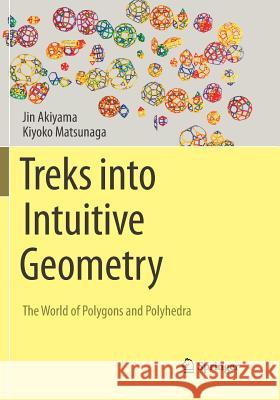Treks Into Intuitive Geometry: The World of Polygons and Polyhedra » książka
topmenu
Treks Into Intuitive Geometry: The World of Polygons and Polyhedra
ISBN-13: 9784431567097 / Angielski / Miękka / 2019 / 425 str.
Kategorie:
Kategorie BISAC:
Wydawca:
Springer
Język:
Angielski
ISBN-13:
9784431567097
Rok wydania:
2019
Wydanie:
Softcover Repri
Ilość stron:
425
Waga:
0.76 kg
Wymiary:
25.4 x 17.78 x 2.29
Oprawa:
Miękka
Wolumenów:
01
Dodatkowe informacje:
Wydanie ilustrowane











